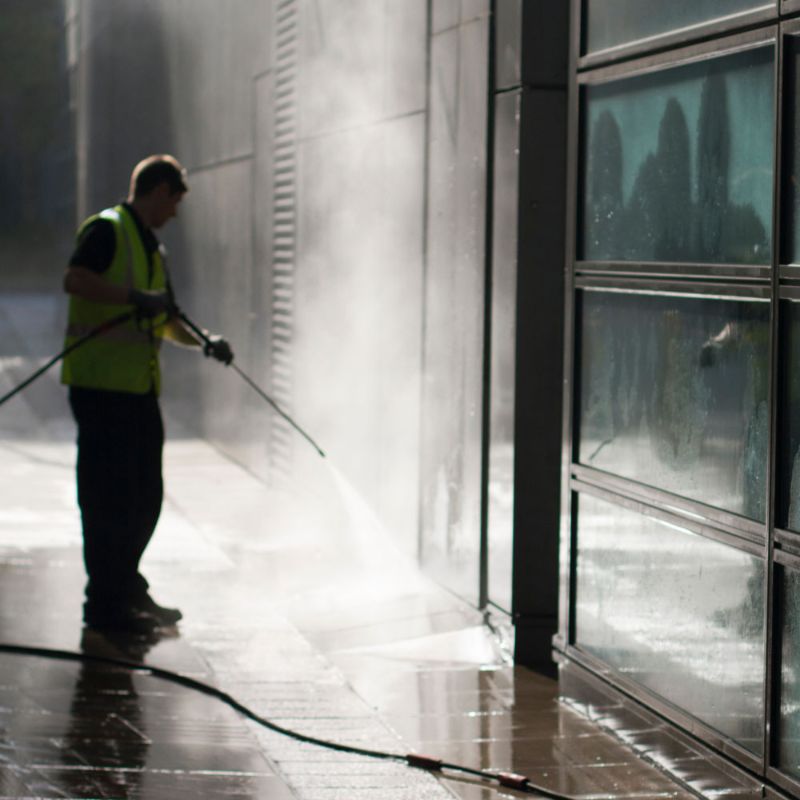Pressure washing can be an excellent way to restore your home’s exterior, but the allure of a quick DIY project often overlooks some critical hazards. While it might seem straightforward, DIY hazards can pose significant risks to both your property and personal safety. Many homeowners underestimate the power of these machines, leading to potential accidents that could have been easily avoided with proper knowledge. From damaging surfaces to causing injury, the consequences of improper use are serious. In this post, we’ll explore essential pressure washing safety tips and address common home pressure washing risks to help you make informed decisions and keep your property in top shape.
Understanding DIY Pressure Washing Hazards
Before you start your DIY project, it’s crucial to understand the potential risks involved. This section will cover the dangers associated with the equipment and the common types of surface damage that can occur.
Potential Equipment Dangers
Pressure washers are powerful tools that can cause serious injury if not handled correctly. The high-pressure water stream can easily cut through skin and cause deep tissue damage.
One of the main risks is the potential for kickback when the spray hits a hard surface. This sudden force can cause the user to lose control of the wand, leading to accidents.
Electrical hazards are another concern, especially with electric pressure washers. Using these machines in wet conditions increases the risk of electric shock.
Lastly, the noise level of pressure washers can cause hearing damage over time. It’s important to use proper ear protection when operating these machines.
Common Surface Damage Risks
Pressure washing can cause unexpected damage to various surfaces if not done correctly. Wood is particularly vulnerable, as the high-pressure stream can easily etch or splinter the surface.
Concrete and masonry can also be affected. The force of the water can erode the surface, leading to pitting or even structural damage in extreme cases.
Paint and other coatings are at risk of being stripped away by the high-pressure stream. This can leave surfaces exposed and vulnerable to further damage.
Even seemingly hard surfaces like vinyl siding can be damaged. The water can get behind the siding, leading to mold growth or structural issues.
Pressure Washing Safety Essentials
To minimise the risks associated with DIY pressure washing, it’s important to follow proper safety protocols. This section will cover the necessary gear and equipment, as well as safe operating techniques.


Proper Gear and Equipment
Wearing the right protective gear is crucial for safe pressure washing. Safety goggles are a must to protect your eyes from debris and water spray.
Closed-toe shoes with non-slip soles help prevent slips and falls on wet surfaces. Gloves provide grip and protect your hands from the high-pressure stream.
Ear protection is important due to the loud noise produced by pressure washers. Earplugs or earmuffs can help prevent hearing damage.
For electric pressure washers, use a ground fault circuit interrupter (GFCI) to reduce the risk of electric shock. This device cuts off power if it detects a ground fault.
Safe Operating Techniques
Start by reading the manufacturer’s instructions thoroughly. Each pressure washer model may have specific safety guidelines.
Always test the pressure washer on a small, inconspicuous area first. This helps you gauge the pressure and avoid damaging larger areas.
Maintain a safe distance between the nozzle and the surface you’re cleaning. A good rule of thumb is to start at least 2 feet away and move closer if needed.
Never point the pressure washer at people, animals, or fragile objects. The high-pressure stream can cause serious injury or damage.
When moving between areas, always release the trigger and engage the safety lock. This prevents accidental sprays that could cause injury or damage.
Avoiding Home Pressure Washing Accidents
Even with proper safety measures, accidents can still happen. This section will help you recognise warning signs and know when it’s best to call in a professional.
Recognising Warning Signs
Pay attention to any unusual noises or vibrations from the pressure washer. These could indicate mechanical issues that need immediate attention.
Watch for signs of surface damage as you work. If you notice etching, splintering, or paint removal, stop immediately and reassess your technique.
Be aware of your physical condition. Fatigue can lead to poor judgment and increased risk of accidents. Take regular breaks to stay alert.
Monitor the weather conditions. High winds can affect the spray pattern and increase the risk of injury or property damage.
When to Call a Professional
Consider hiring a professional for pressure washing jobs that require working at heights, such as cleaning second-story windows or gutters. The risk of falls increases significantly in these situations.
If you’re dealing with delicate surfaces or materials that require special care, a professional will have the expertise to clean them safely.
For large scale projects or those requiring specialised equipment, it’s often more cost effective and safer to hire a professional.
If you’re unsure about the proper technique or pressure settings for a particular surface, it’s best to consult with a professional to avoid potential damage.
Remember, the cost of professional services is often less than the potential cost of repairing damage caused by improper DIY pressure washing.
